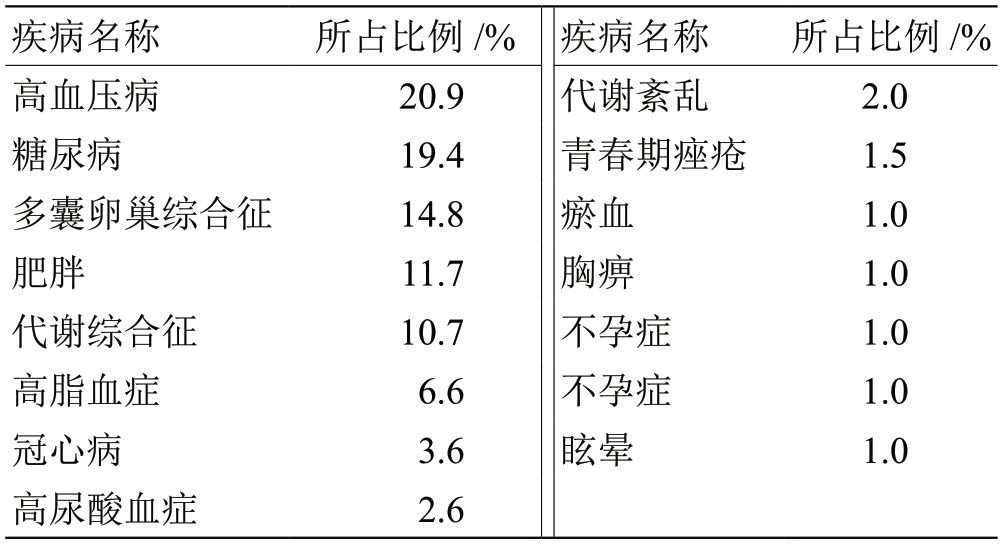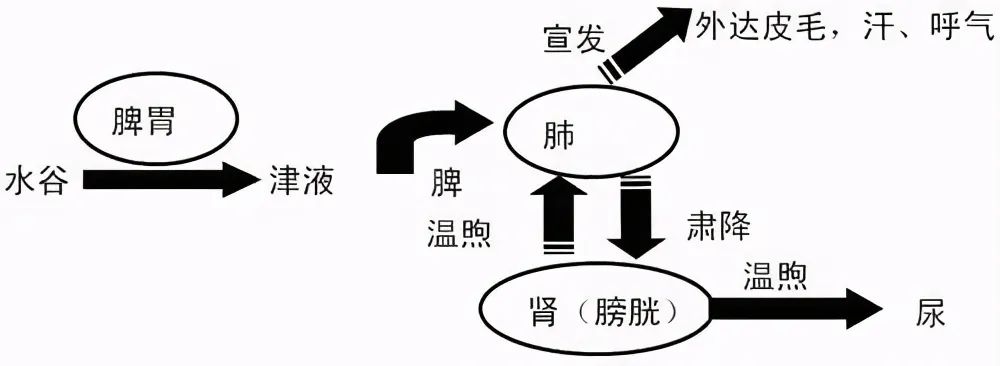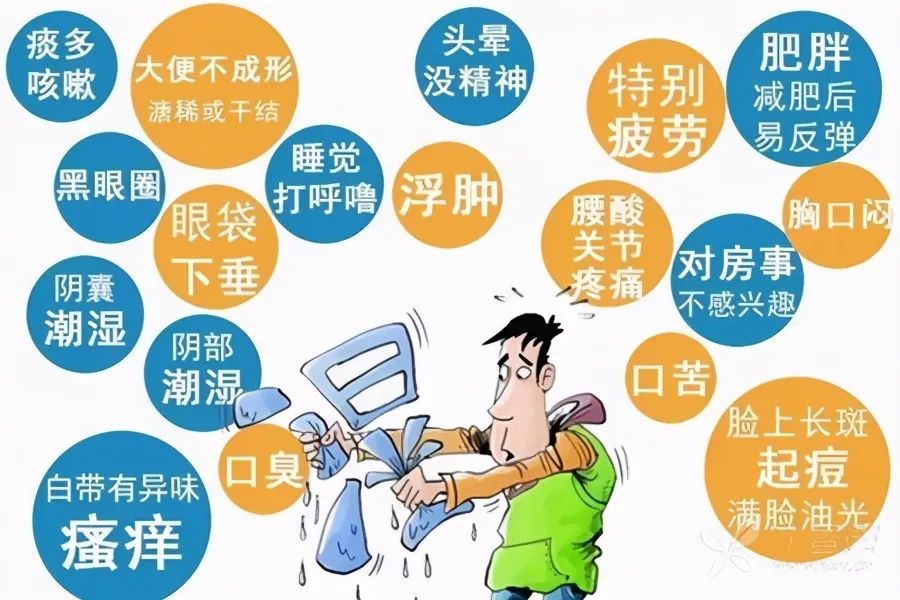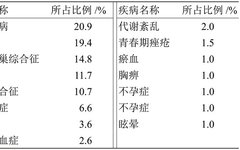Traditional Chinese Medicine (TCM) believes that “all diseases are caused by phlegm-dampness.” Modern medicine also indicates that phlegm-dampness is a significant factor in various diseases. Research has found that approximately 20.9% of hypertension, 19.4% of diabetes, and 11.7% of obesity are related to phlegm-dampness.

(Proportion of diseases related to phlegm-dampness)
Today, we will discuss why phlegm-dampness occurs and how to eliminate it effectively.
Where Does “Phlegm-Dampness” Come From?
TCM posits that “the spleen is the source of phlegm, and the lungs are the storage for phlegm.” The Jingyue Quanshu states: “All diseases of the five organs can produce phlegm, but they all stem from the spleen and kidneys. The spleen governs dampness; when dampness moves, it becomes phlegm. The kidneys govern water; when water overflows, it also becomes phlegm.” The Dantai Yuhan: Phlegm Door also mentions: “Phlegm arises from the spleen, often causing fatigue in the limbs, abdominal pain and swelling, diarrhea, with a slow pulse; overweight individuals often have this condition, termed damp-phlegm.”
Throughout history, physicians have recognized that the formation of phlegm-dampness is closely related to the lungs, spleen, and kidneys.
Firstly, the lungs govern the dispersal and descending of qi, regulating the waterways and distributing body fluids. If the lungs fail to disperse and descend, they cannot regulate the waterways, leading to the stagnation of dampness and the accumulation of turbid phlegm.
Secondly, the spleen governs the transformation and transportation of fluids, being a crucial organ for the metabolism of body fluids. If the spleen fails to function properly, it will lead to the accumulation of fluids, resulting in phlegm-dampness.
The kidneys govern water and qi transformation. If the kidneys are deficient and cannot control water, combined with obstructed qi transformation, phlegm-dampness will also arise.

This is akin to having a “small reservoir” within each person. The lungs, spleen, and kidneys work together to promote the flow of water in this reservoir, allowing fresh water to flow in daily while expelling waste.
If any of these three organs—lungs, spleen, or kidneys—experience issues, the renewal of water in the reservoir is affected. Over time, the water accumulates thick waste, leading to deteriorating health.
Individuals with phlegm-dampness often experience various discomforts, such as a heavy body feeling, drowsiness, oily skin, lack of appetite, fatigue, unsatisfactory bowel movements, cold limbs, chest tightness, shortness of breath, thick tongue coating, a white greasy tongue, or a yellow greasy tongue. Symptoms may also include teeth-marked tongue and cracked tongue.

How to Effectively Eliminate Phlegm-Dampness?
Many people interpret “phlegm” literally, thinking it refers to the phlegm coughed up from the mouth. However, from a TCM perspective, phlegm can be categorized into two types: tangible phlegm and intangible phlegm. The phlegm coughed up belongs to the former, while intangible phlegm, although not producing tangible phlegm, can cause symptoms such as dizziness, nausea, vomiting, and fatigue.
Therefore, treating phlegm does not simply mean eliminating phlegm; it starts with regulating qi. The famous Yuan dynasty physician Zhu Danxi stated, “Those who are good at treating phlegm do not treat phlegm but treat qi. When qi flows smoothly, the body fluids will also flow smoothly with it.” The Jisheng Fang: Treating Phlegm and Fluid also discusses, “The flow of qi is paramount; when it flows smoothly, body fluids circulate, and there will be no issues with phlegm and fluids.”
Specifically, phlegm can be categorized into four types: cold phlegm, heat phlegm, dry phlegm, and damp phlegm.
Damp phlegm refers to the co-existence of dampness and phlegm. Dampness can accumulate to form phlegm, which in turn affects the transformation of body fluids, leading to increased fluid accumulation and exacerbating dampness in the body. Clinical observations have found that individuals with a damp-phlegm constitution often experience symptoms such as cough, asthma, excessive phlegm, dizziness, gastrointestinal discomfort, and vomiting. If the body is not properly regulated, it can easily lead to diseases such as hypertension, diabetes, coronary heart disease, obesity, and chronic gastritis.

In treatment, if phlegm is caused by the lungs failing to disperse and leading to fluid accumulation, the focus should be on dispersing the lungs and transforming phlegm, using the Er Chen Tang (Two Aged Decoction) with modifications. If the spleen fails to function properly, leading to dampness accumulating into phlegm, the treatment should focus on strengthening the spleen and transforming phlegm, using the Liu Jun Zi Tang (Six Gentlemen Decoction) with modifications. If kidney deficiency leads to water overflowing as phlegm, the treatment should primarily focus on warming yang and transforming phlegm, using the Jin Gui Shen Qi Wan (Kidney Qi Pill) with modifications.
It is important to note that dampness often collaborates with cold or heat, forming cold-damp or damp-heat. Many individuals with phlegm-dampness also exhibit signs of cold or heat, so treatment must differentiate between cold and heat and use appropriate formulas and medications based on the actual situation.
Note: Some text and image resources in this article are sourced from the internet. The purpose of sharing this article is to convey more information. If there are any errors in source attribution or infringement of your legal rights, please notify us immediately, and we will delete it promptly and apologize.
Recommended Reads

